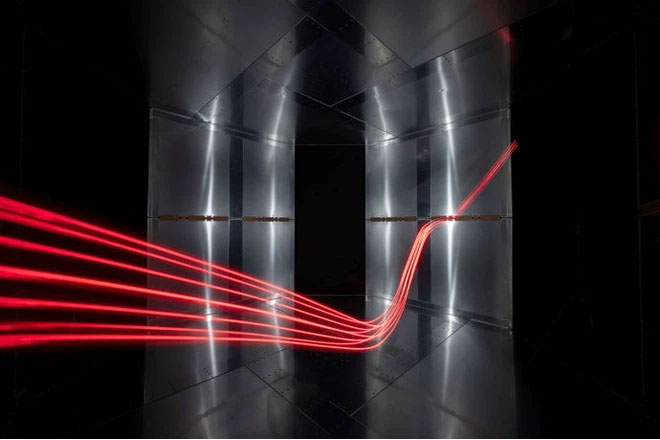What if electronic devices operated simply by being present in a room, without needing to be plugged in at all? Researchers at the University of Tokyo have successfully developed a special room that can wirelessly transmit energy to a variety of electronic devices, charging them without the need for outlets or energy storage batteries.
This system “allows for powerful and safe wireless energy transmission in large quantities,” said Takuya Sasatani, assistant professor and lead author of the study, in an interview with the media. The mechanism of the room operates similarly to the wireless charging technology we are familiar with for phones: a combination of coil wires (metal wires coiled into a spring shape) within a magnetic field generates electricity.

The mechanism of the room operates similarly to wireless charging technology for phones.
The wireless charging technologies we know typically draw power from an outlet to create a magnetic field that envelops a small space. When placing modern smartphones that already have coil wires on a wireless charging pad, we witness the interaction between them generating a current strong enough to charge the phone’s battery.
However, wireless charging pads have certain limitations. Removing the phone from the pad, or even having a case that is too thick, can disrupt the connection. In contrast, a magnetic field that envelops an entire room allows any device within it to receive energy.
“The idea of building a room that allows devices to receive energy regardless of their location is truly captivating and exciting!,” said Joshua Smith, a professor of computer science and electrical engineering at the University of Washington, in response to Scientific American. As an outsider evaluating the research results, he noted: “This report is gradually turning the special room into a reality.”
In their research report, the scientists describe this “science fiction” room, which has a volume of 18 cubic meters, equivalent to a shipping container. The walls of the room are made of conductive aluminum panels, and vertical metal tubes run between the walls. Inside the room are lights and fans capable of receiving wireless energy, along with some furniture like tables, chairs, and bookshelves.
The special room can provide power to electronic devices within it.
They directed the current through the metal walls and columns in specific patterns to create a three-dimensional magnetic field within the 18m3 space. In fact, this experiment generated two distinct magnetic fields: one in the center of the room and another that envelops all corners, allowing devices within the room to receive energy no matter where they are located.
Through measurements and computer modeling, lead researcher Sasatani and his colleagues found that they could transmit a current of 50 watts throughout the room. All devices equipped with coil wires, including a smartphone, a light bulb, and a fan, successfully received energy. However, there were some energy losses, with transmission efficiency ranging from a low of 37.1% to a high of 90%. These fluctuations are caused by the intensity of the magnetic field at specific points, as well as the orientation of the devices.
Without safety measures, the current running through the metal walls would produce two types of waves: electric and magnetic waves. Because electric fields can generate heat within living organisms and affect human health, the research team added capacitors within the walls to store electrical energy.
“It keeps the magnetic field safe, contained within the room while storing any dangerous elements quietly inside the walls,” Sasatani explained.

Not only phones, other devices can also receive energy.
The research team tested the safety of the room using computer simulation software, anticipating the potential effects of the charging room on the human body. The Federal Communications Commission (FCC) regulates the amount of electromagnetic radiation a person can be exposed to, ranging from 300 kHz to 100 GHz. Measurements taken in the charging room indicate that it is safe for users.
“We have not yet confirmed that this technology is safe for all uses; the team is still exploring,” co-author Alanson Sample stated. “However, we remain confident that there are many areas to explore, and with established safety standards, we can charge phones as soon as you step into the room without worrying about other safety factors.”
Not only phones benefit; researcher Sample pointed out that other devices can also receive energy. Sensors, autonomous robots, or life-supporting implantable devices could operate without wired connections. Sample even envisions a surgical room where all devices are ready to function without tangled electrical cords.
However, the aforementioned applications are still a long way off. “Applying aluminum panels to the walls is still cumbersome, and the effectiveness is not yet high,” Sample said. “We have just developed a new technique. Now is the time to find practical applications.”
The team is investigating whether covering walls with conductive materials or constructing walls with conductive materials is more effective, alongside improving energy transmission to ensure the magnetic field reaches every nook and cranny.


















































